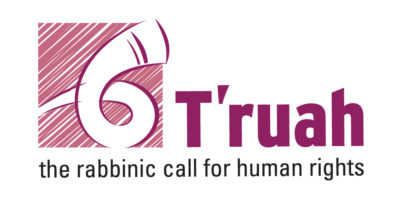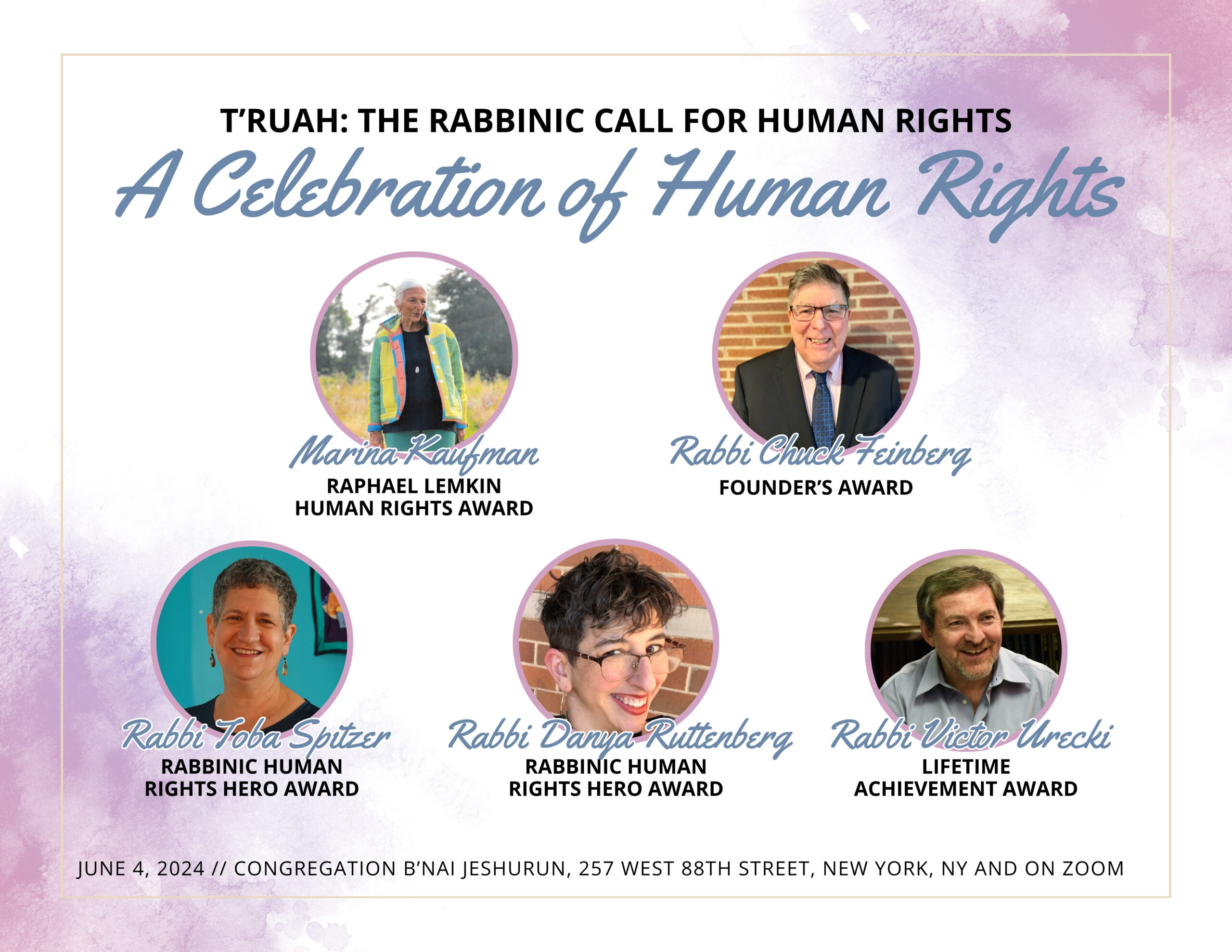We are appalled at the killing of two Israeli security officers at Temple Mount/Haram al-Sharif, the loss of Palestinian life in clashes with police, and the escalating tensions in East Jerusalem.
Jewish tradition teaches that there are two Jerusalems, Yerushalayim shel Maala, the heavenly or spiritual Jerusalem, and Yerushalayim shel Mata, the earthly, physical city with all its imperfections. As rabbis, we are striving to bridge the gap between the geopolitical realities of a divided Jerusalem and the vision of the peaceful, holy city Jews have longed for throughout the ages. To realize this vision, especially in times of fear and great challenge, we must work to keep our hearts open. Anything less than deep listening and nuanced responses that recognize the grievances of both Israelis and Palestinians only perpetuates the hardening of hearts and cycle of violence.
T’ruah urges Prime Minister Netanyahu, President Abbas, and religious leaders to swiftly intervene and maintain the long-accepted status quo of Israeli security outside the Temple Mount/Haram al-Sharif and Waqf authority within it, as recognized in the peace treaty between Israel and Jordan in 1994. Further restricting Muslim access to the sacred site will provoke further violence and lead all parties further down the path of bloodshed.
Control over Temple Mount/Haram al-Sharif is one of the issues at the heart of the Israeli-Palestinian conflict. The way out of this conflict is to negotiate a resolution that results in both peoples living within their own sovereign states with a shared Jerusalem.
The joy of the Jewish people at regaining access to the Western Wall in Jerusalem and other sacred sites is paired with the struggles and complexities of governing a multicultural city considered holy by Muslims, Christians and Jews; and of having sovereignty over Palestinians in East Jerusalem, most of whom are not citizens of Israel or any other country.
As we approach Tisha B’av and mourn the loss of the Temple, we are particularly sensitive to Palestinians’ profound love for their holy site. The Talmud offers a tale of Jews making a pilgrimage to Jerusalem during a time when the Roman occupiers forbade this practice: One group covered their baskets of first-fruit offerings with dried figs and a mortar and pestle; when the guards asked them where they were going, they said they were going to make pressed fig cakes, and the guards let them through. Another group brought wood for the altar, making it into ladders; when the guards asked where they were going, they said they were going to bring down some birds from a dovecote, and the guards let them through (Babylonian Talmud, Ta’anit 28a). Such stories and their particulars transmit the memory of our longing for Jerusalem and our struggle to reach it under adverse circumstances—a longing and a struggle that have accompanied us throughout our history.
Fifty years ago, that longing turned to elation when, during the Six-Day War, the State of Israel captured Jerusalem’s Old City and the villages surrounding it. But the victory has been bittersweet.
In the thousands of years that most Jews could only yearn for Jerusalem, our tradition developed myriad images of this place. We extol Jerusalem’s uniqueness; Jerusalem as a place to encounter the Divine presence; Jerusalem as a place of kindness; Jerusalem as a place where diverse people meet; and Jerusalem as a place of pain and suffering. We hope that the prophet Isaiah’s vision for Jerusalem might yet come to be — (1:21) ּהָּב ןיִלָי קֶדֶצ טָּפְׁשִמ יִתֲאֵלְמ Jerusalem the faithful city, filled with justice, where righteousness dwells.


